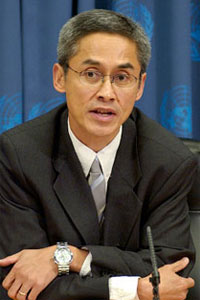
The Asean Intergovernmental Commission On Human Rights (AICHR) is 10 years old this year. How has it fared so far? In its work, it is the promotion-oriented aspect rather than the protection-based dimension which has prevailed to date and, with that ambivalence, the performance of AICHR leaves much to be desired.
Human rights promotion tends to be concerned with awareness raising, capacity building, conferencing, workshop hosting, education and training. By contrast, human rights protection requires action to shield people from harm, to ensure access to justice, to address complaints, in particular from affected individuals and groups, to undertake investigations and fact-finding to ascertain the truth, and to provide remedies, with the backdrop of responsibility at least on the part of the state towards the aggrieved parties.
In reality, the latter is the more challenging part of the human rights equation and if a mechanism can offer such protection, it will earn credibility and show a more genuine value added to the people of the region and beyond.
The AICHR mandate per its Terms of Reference, drafted pursuant to the Asean Charter 1987, is to "promote and protect human rights". There are various stipulated functions, such as to provide advisory services on human rights; encourage dialogue and consultation with other Asean bodies and entities associated with Asean, including civil society organisations and other stakeholders; consult with other national, regional and international institutions and entities concerned with the promotion and protection of human rights; obtain information from Asean member states on the promotion and protection of human rights; and develop common approaches on human rights matters of interest to Asean.
The underlying rationale of the body is to promote and protect human rights. However, there is no explicit provision for a protection role in the sense of ensuring access to justice, undertaking investigations, receiving complaints/communications/petitions from those affected negatively by the human rights situation, making violation findings, and offering remedies, especially where the national system is unable or unwilling to act.
Since its inception, the commission has been more involved with promotion-related activities, such as conferences and studies, coupled with the current orientation towards more standard-setting rather than addressing human rights issues from the protection angle. A key lacuna is its failure to address crimes committed against the Rohingya and the subsequent massive refugee outflows into neighbouring countries. This is compounded by other discrepancies, especially violations of civil and political rights such as extra-judicial killings and repression of freedom of expression and peaceful assembly, rendered more complex in a region where the majority of countries are non-democratic.
The directions of AICHR's work are increasingly clear from its work plan 2016-2020. It aims to undertake more promotion-related activities (e.g. more information sharing, discourse, training and conferencing), more capacity building for itself and its partners, more research and study for reflection and self-reflection, singling out themes rather than countries, and more standard setting, possibly with more Asean declarations and treaties. These are all cooperative activities, based on the Asean praxis of consensus-building, avoiding confrontation as part of the governmental "Asean way". They do not, however, fulfil the promise of a genuine protection role.
One of the key tasks where the AICHR can strengthen its protection work is to help interpret the Asean Human Rights Declaration (AHRD) in a liberal manner so as to raise it to international standards. The declaration was adopted in 2012. While it has some innovative elements, such as the call to protect persons with HIV/Aids, and advocacy of the rights to development and peace, the AHRD has been heavily criticised by analysts for not being consistent with international standards. The stumbling blocks include the appearance of regional particularities in the text which might undermine universally recognised human rights, and the omission of some key international human rights, such as the right to freedom of association. Problems concerning the text were borne out by the fact that Asean leaders had to issue the Phnom Penh Statement in 2012 to accompany the AHRD, underlining that implementation of the latter had to be in accordance with international standards.
Clearly there is a need for the AICHR to take up a substantive human rights protection role. Such a role is not to be considered as interference in the internal affairs of a state. Human rights advocacy is part of international jurisdiction and advocacy of protection at regional and national level assists states in rectifying negative situations in fulfilling their obligations, given the universal principle that it is the primary responsibility of states to protect human rights.
There are various options in terms of next steps, particularly targeted to the AICHR but also with a message to Asean's sectoral bodies, including those dealing with women's and children's rights and with migrant workers. The maximal approach is to advocate that the AICHR should pursue a more ambitious path to undertake these activities: monitor human rights situations in the region; carry out site visits on alleged violations; undertake investigations and fact-finding; hold thematic public hearings; receive and act on individuals' complaints; issue recommendations for remedies; proffer advice, potentially on interpretation of Asean instruments, such as the AHRD, by means of a general comment and/or advisory opinion.
Meanwhile, the minimal approach concerning the AICHR could be to invigorate its role at least to give advice, such as on interpretation of the AHRD, by means of a general comment and/or advisory opinion, and to press AICHR to cross-refer complaints from aggrieved parties to national human rights commissions or their equivalent (possibly UN mechanisms, such as Special Rapporteurs). Much will thus depend on enlightened leadership to project a greener pathway to overcome the longstanding "protection deficit".
Vitit Muntarbhorn is a Professor Emeritus at Chulalongkorn University. He was formerly a UN Special Rapporteur, UN Independent Expert and member of UN Commissions of Inquiry on human rights. He is the author of the book titled: 'Unity in Connectivity? Evolving Human Rights Mechanisms in the ASEAN Region'.
